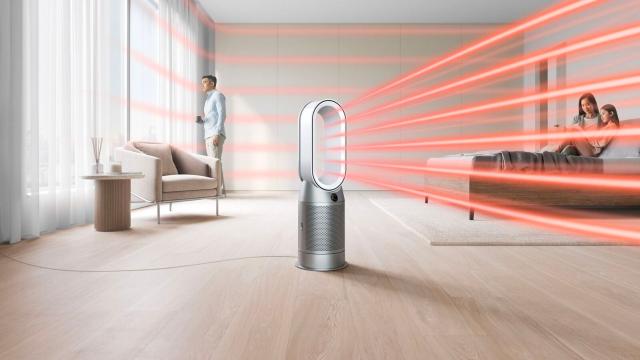Every now and then, Dyson likes to torment us with studies that show that everything we interact with is disgusting and will kill us eventually, and we can only be saved by using products very similar to the ones the company sells. That said, they’re probably not wrong, and it’s fascinating to get a look at the data being produced by more than 3.4 million air purifiers worldwide throughout all of 2022. 105,768 of those connected purifiers were in Australia, which gives us insight into A. how many people actually connect their air purifiers to the internet, and B. how much worse our indoor air quality is than our outdoor air quality most of the time.
The most surprising finding is that the monthly average indoor PM2.5 level exceeded WHO guidelines at least 6 months of the year in all countries, it was bad year-round in Australia. Our air quality is worse indoors than outdoors year-round. The indoor air quality was also worse than outside on average in Australia every month. So, that’s fun.
PM2.5 sounds so small, so tiny, so inconsequential. They’re particles the size of 2.5 microns in diameter, and a human hair is 70 microns, so they are very small. But that also makes them easier to breathe in, and are small enough to pass into the bloodstream. These particles can be from dust, gas stovetops, smoke, car pollution, metals, and other things you don’t want to be absorbing into your blood. The WHO recommended limit for PM2.5 exposure is <5μg/m3. Higher levels are associated with asthma, lung disease, heart disease, and a reduction in life expectancy. So, you know, it’s not great that our average indoor PM2.5 levels are 7.19μg/m3.
If we’re going to do the state-by-state rivalry thing, Melbourne had worse air quality than Sydney for every month but June. Melbourne’s worst month was May, with an average of 9.39μg/m3, while Sydney’s was June with an average of 7.8μg/m3. The other states and major cities were not mentioned.
The news isn’t all bad, we’re not the worst in the world by a long shot, with only the 28th worst air out of the 39 countries included in the study.
Unfortunately, I don’t have access to the full rankings and numbers, so we can’t get super competitive about air. But the two countries with the worst air quality are, unsurprisingly, India and China. Weirdly, the Dyson announcement doesn’t mention the countries ranked 3-5, but the 6th worst is Romania, Italy is 8th, Poland 9th, and Austria 10th, Germany’s 17th and France is 18th. The UK is the 22nd worst, USA is 26th, Canada 27th and Australia 28th. There is no word on whether New Zealand beat us.
All countries exceeded the WHO annual guidelines for PM2.5, but India really committed, exceeding it by a factor of 11. China only by a factor of 6. The top ten cities by average annual PM2.5 are Delhi, Beijing, Shanghai, Shenzhen, Busan, Istanbul, Dubai, Seoul, Mexico City, and Vienna. Sydney had the best indoor air quality. So, well done, Sydney.
Dyson would like your takeaway from this to be that you should always leave an air purifier on auto in your home. I would like the takeaway to be that indoor and outdoor air quality needs to be better monitored and regulated, and there should be minimum ventilation standards put in place for commercial buildings and rentals. But the air purifier thing is probably a good idea, too.
